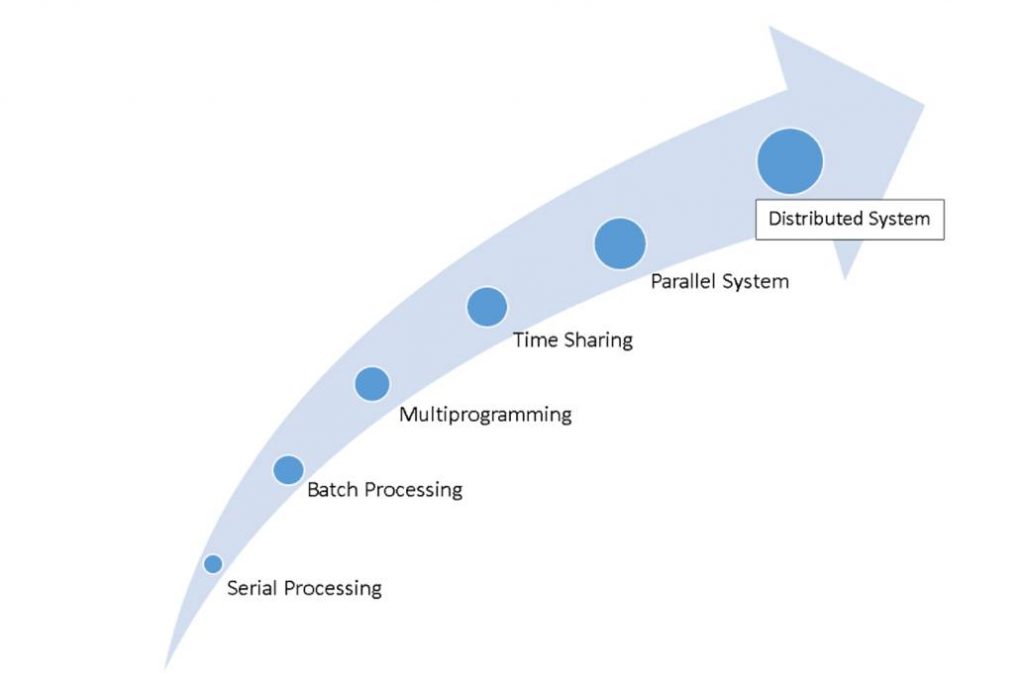
Evolution of Operating System
Evolution of Operating system started from serial to batch, and gradually to multiprogramming, time sharing, parallel and distributed systems. Evolution of Operating system have completely brought delight changes in the human computing world. Now, it can process several operations in a very short period depending upon the type of operating system.

1. Serial Processing:
History of the operating system started in 1950. Before 1950, the programmers directly interact with the hardware there was no operating system at that time. If a programmer wishes to execute a program on those days, the following serial steps are necessary.
a. Type the program or punched card.
b. Convert the punched card to a card reader.
c. submit to the computing machine, is there any errors, the error was indicated by the lights.
d. The programmer examined the register and main memory to identify the cause of an error
e. Take outputs on the printers.
f. Then the programmer ready for the next program.
2. Batch Processing:
Before 1960, it is difficult to execute a program using a computer because of the computer located in three different rooms, one room for the card reader, one room for executing the program and another room for printing the result.
The user/machine operator runs between three rooms to complete a job. We can solve this problem by using batch processing.
In batch processing technique, the same type of jobs batch together and execute at a time. The carrier carries the group of jobs at a time from one room to another. Therefore, the programmer need not run between these three rooms several times.
3. Multiprogramming:
Multiprogramming is a technique to execute the number of programs simultaneously by a single processor. In multiprogramming, a number of processes reside in main memory at a time.
The OS(Operating System) picks and begins to execute one of the jobs in main memory.
Advantages:
- Can get efficient memory utilization.
- CPU is never idle so the performance of CPU will increase.
- The throughput of CPU may also increase.
4. Time-sharing
- Time-sharing or multitasking is a logical extension of multiprogramming.
- Multiple jobs are executed by the CPU switching between them.
- The CPU scheduler selects a job from the ready queue and switches the CPU to that job.
- When the time slot expires, the CPU switches from this job to another.
5. Parallel system
- There is a trend multiprocessor system, such system have more than one processor in close communication, sharing the computer bus, the clock, and sometimes memory and peripheral devices.
- These systems are referred to as “Tightly Coupled” system. Then the system is called a parallel system. In the parallel system, a number of processors are executing there job in parallel.
Advantages:
- It increases the throughput.
- By increasing the number of processors(CPU), to get more work done in a shorter period of time.
Distributed system
In a distributed operating system, the processors cannot share a memory or a clock, each processor has its own local memory. The processor communicates with one another through various communication lines, such as high-speed buses. These systems are referred to as “Loosely Coupled” systems.
You may also like: Types of Operating System.

Leave a Reply